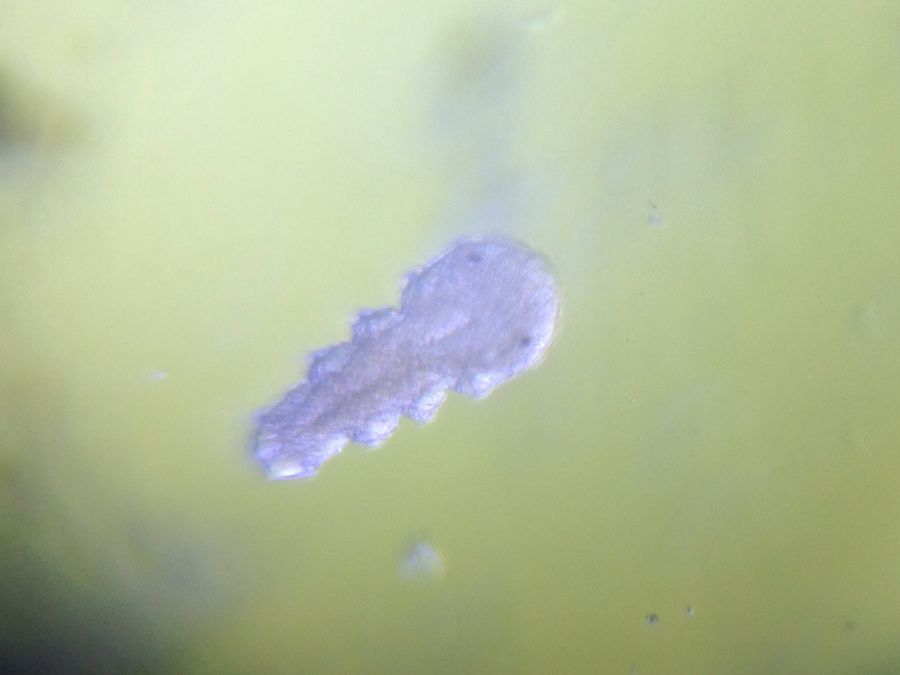Unknown Larvae with ciliary bands: Secret life of the ocean – Part 1
 Nov 25, 2014 • 6:50 AM UTC
Nov 25, 2014 • 6:50 AM UTC Unknown Location
Unknown Location 140x Magnification
140x Magnification Microorganisms
Microorganisms
Manu Prakash
I am a faculty at Stanford and run the Prakash Lab at Department of Bioengineering at Stanford University. Foldscope community is at the heart of our Frugal Science movement - and I can not tell you how proud I am of this community and grassroots movement. Find our work here: http://prakashlab.stanford.edu
266posts
1192comments
42locations

Summary: Here is the first of a series of several videos I will be posting with the theme of ocean life forms..
The ocean is often pronounced as the last unknown frontiers on the planet. I think we have a lot to explore everywhere, but watching transparent marine life in the ocean is an amazing treat unmatched in microscopy. So here I am starting a series documenting ocean life under a Foldscope. Lots of surprises hidden here; many creatures are unidentified right now – but I will slowly put labels/tags on them. The value of field microscopy with Foldscope really shines, since most marine environments are harsh (wobbling boats or rocky sea shores).
Methods:
1. As a start, I put a simple trap made out of a glass slide box with large holes in the harbor, hanging with a monofilament fishing line. The slide box has a fresh batch of 10-12 glass slides; which provides an open surface for the larvae to land and grow. I often leave them for a week, but this time I left them for a month. This was a very crowded overgrowth.
2. With collected samples from the ocean, you have to work fast. In 3-4 days, the cultures start to die. I air the water to increase the dissolved oxygen; and sometimes put some bags of ice (in ziplock bag) to lower the water temperature.
3. I took a sample of a drop of the water and placed on the slide. This time I used a glass slide and a cover slip (with two double sided tape since I had access to the same). As you will notice, the images look better with glass slides.
4. I used a Foldscope 140X with my iPhone5.
5. I also collect a drop of water from a tide pool and often find surprises.
6. Another way to collect is to use a plankton net; which I will describe in a later post.
Videos:
https://www.youtube.com/watch?v=qDGXzAfG49Y&feature=youtu.be
The ocean is often pronounced as the last unknown frontiers on the planet. I think we have a lot to explore everywhere, but watching transparent marine life in the ocean is an amazing treat unmatched in microscopy. So here I am starting a series documenting ocean life under a Foldscope. Lots of surprises hidden here; many creatures are unidentified right now – but I will slowly put labels/tags on them. The value of field microscopy with Foldscope really shines, since most marine environments are harsh (wobbling boats or rocky sea shores).
Methods:
1. As a start, I put a simple trap made out of a glass slide box with large holes in the harbor, hanging with a monofilament fishing line. The slide box has a fresh batch of 10-12 glass slides; which provides an open surface for the larvae to land and grow. I often leave them for a week, but this time I left them for a month. This was a very crowded overgrowth.
2. With collected samples from the ocean, you have to work fast. In 3-4 days, the cultures start to die. I air the water to increase the dissolved oxygen; and sometimes put some bags of ice (in ziplock bag) to lower the water temperature.
3. I took a sample of a drop of the water and placed on the slide. This time I used a glass slide and a cover slip (with two double sided tape since I had access to the same). As you will notice, the images look better with glass slides.
4. I used a Foldscope 140X with my iPhone5.
5. I also collect a drop of water from a tide pool and often find surprises.
6. Another way to collect is to use a plankton net; which I will describe in a later post.
Videos:
https://www.youtube.com/watch?v=qDGXzAfG49Y&feature=youtu.be
Sign in to commentNobody has commented yet... Share your thoughts with the author and start the discussion!

 0 Applause
0 Applause 0 Comments
0 Comments
















